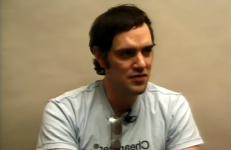
This section comprises taped interviews with artists, architects, musicians, critics and other creative practitioners, recorded in conversation with Video Data Bank staff, colleagues from the School of the Art Institute faculty, and others knowledgeable about the particular interviewees work.
The first interview dates from 1976, the year of VDB’s official inauguration, and VDB continues to add to the collection to this day, recording and producing approximately ten new interviews a year. Many of the interviewees are guests of SAIC departments, such as the Visiting Artists program or Conversations at the Edge screening series, or invitees of the Society for Contemporary Art. The VDB interviews supplement these visits, allowing for an in-depth conversation that underlines the development of an artist's practice.
Dennis Adams (b. 1948) is an American conceptual artist whose work includes photography, text, and installation. Adams is best known for his projects involving structures placed in urban bus shelters, uncompromisingly inserted into the public sphere. These politically charged photographs and their accompanying texts are not used to make overtly ideological statements, but are open-ended in ways that challenge viewers to test their own convictions.
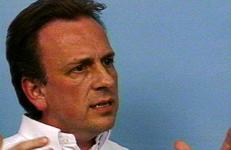
In this interview, American filmmaker, teacher, and video artist Peggy Ahwesh (b.1954) delves into the key figures and primary texts that have inspired her work in Super-8 and video since the 1970s. She discusses her early influences as a member of the underground art scenes in Pittsburgh in the late 70s and Soho’s Kitchen in the 80s. Ahwesh’s experimental hand-processing and controversial subject matter can be traced to feminist theory, and her exposure to underground experimental films, including works by Werner Herzog, George Amaro, Kenneth Anger, Jack Smith and her teacher at Antioch College, Tony Conrad.
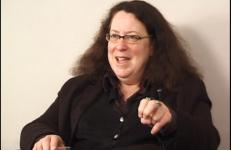
The word-based art and performances crafted by world-renowned artist Alison Knowles (b.1933) are central to the 1960s international Fluxus movement and its enduring legacy. Describing her experience as a student at Pratt University in the 1950s where she learned from Richard Lindner and Adolf Gottlieb, Knowles recalls her transition from Abstract Expressionist painting to the chance operations initiated by John Cage and Bertolt Brecht.
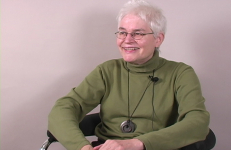
In this interview, Basma Alsharif (b.1983) examines the multiple ways in which her work engages with the notion of nomadism. Beginning with a discussion of how she initially came to video through photography, Alsharif describes how this transformation of her practice required a translation of artistic sensibilities.
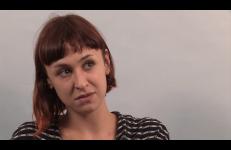
Suzanne Anker (b. 1946) is an American visual artist and theorist. Considered a pioneer in the field of Bio Art, her work is situated at the intersection of artistic practice and biological science. Through a concern for genetics, climate change, species extinction, and toxic degradation, Anker draws focus on the “necessity for enlightened thinking about nature’s ‘tangled bank.’”
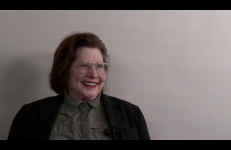
In conversation with curator and educator Mary Jane Jacob, visual artist Ann Hamilton (b. 1956) talks about care, interactivity, and social relations — key concepts that preoccupy her practice — and why she feels compelled to revisit these issues under the Trump administration. Hamilton was trained in textile design and sculpture, and she received her MFA from Yale University School of Art in 1985.
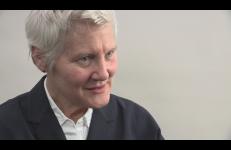
Apichatpong Weerasethakul is a venerated Thai artist and moving image maker who has directed many short works, and several feature films. In this interview, Apichatpong and Daniel Eisenberg — a Chicago-based artist and professor of film and video at the School of the Art Institute of Chicago — discuss Apichatpong’s films along with his perspective on the contemporary film industry and art world.
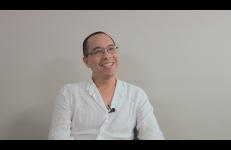
Contemporary American composer and performance artist Robert Ashley (1930-2014) was a pioneer in the development of large-scale, collaborative performance works and new uses of language in operas and recordings. His landmark project, Perfect Lives, was opera produced for television in seven half-hour episodes.
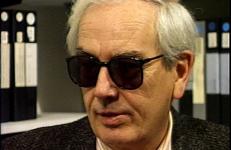
In this interview, extreme performance artist and 1990s culture warrior Ron Athey (b.1961) discusses the genesis of his provocative performance style and the memories and desires that continue to motivate his practice. Athey describes how his particular approach to performance developed dually from his religious upbringing and exposure to devotional theater, as well as from his later interest in the DIY grandiosity of the Los Angeles punk scene.
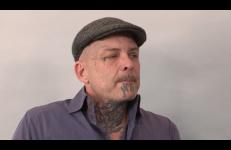
Luis Cruz Azaceta (b.1942) creates paintings and mixed media works which use the recurring theme of the displaced individual. Marked by his own exile from Cuba—he emigrated to the U.S. in 1960, in the wake of Castro’s take-over—the artist realized that home is something he carries with him from place to place. Through his piercing expressionism, Azaceta depicts the frailty of human existence in a world full of social anarchy, historically mandated violence, and natural chaos.

Jessica Bardsley is an artist-scholar working across film, writing, and studio art. Her interdisciplinary research takes an ecological approach to film and media within the global context of contemporary art. In addition to her work as a scholar, she is also an ecofeminist filmmaker.
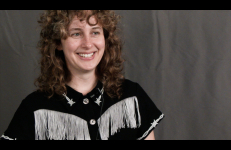
In this interview, American cartoonist and author Lynda Barry (b. 1956) describes the philosophy of teaching that has inspired and mobilized her art since the 1970s. For Barry, the connection between gesture and thought collide in drawing and expose the therapeutic possibilities of art. Whether teaching undergraduate art students or prison inmates, her goal is to help others develop art making skills as an “external immune system” that will protect and monitor their emotional and mental health.
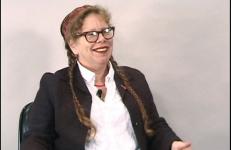
Largely focused on the critical use of language both archaic and contemporary, poet Caroline Bergvall’s work asks questions about cultural identity and feminism and explores challenging or unknown historical and political events. She works across multiple media practices including audio texts, plurilingual poetry, installation and Performance Writing.
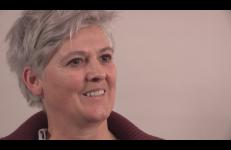
An architect and urban planner by training, Dara Birnbaum began using video in 1978 while teaching at the Nova Scotia College of Art and Design, where she worked with Dan Graham. Recognized as one of the first video artists to employ the appropriation of television images as a subversive strategy, Birnbaum recontextualizes pop cultural icons (Technology/Transformation: Wonder Woman, 1978-79) and TV genres (Kiss the Girls: Make them Cry, 1979) to reveal their subtexts.
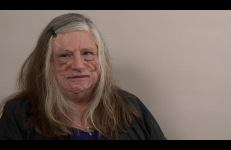
Jeremy Blake (1971-2007) used digital media to create works that function on a flexible spectrum between being more painting-like or more film-like. He created continually looping digital animations with sound to be projected or presented on plasma screens. Blake often began by making the digital C-prints, which he conceived to be somewhat like paintings; if the imagery and idea of one of these works lent itself as such, he might extrapolate from and expand on it to begin creating a digital animation, which could range from 3 to 20 minute repeating loops.
